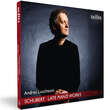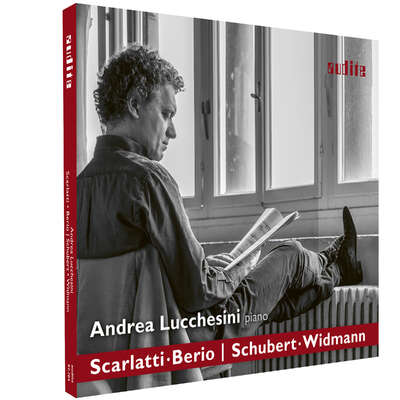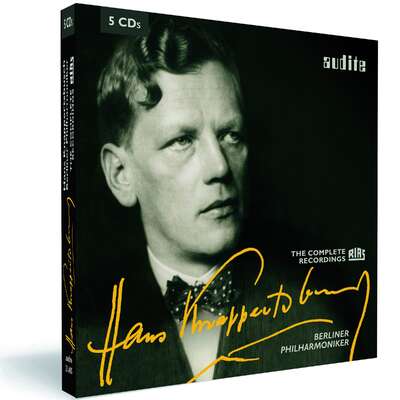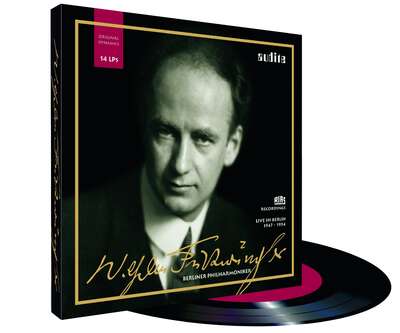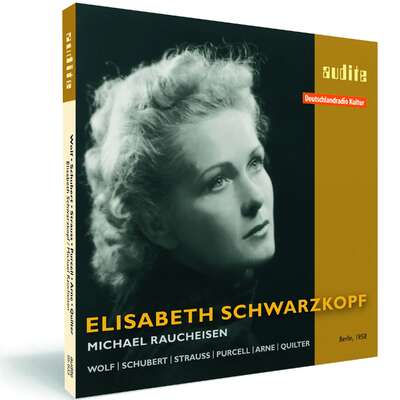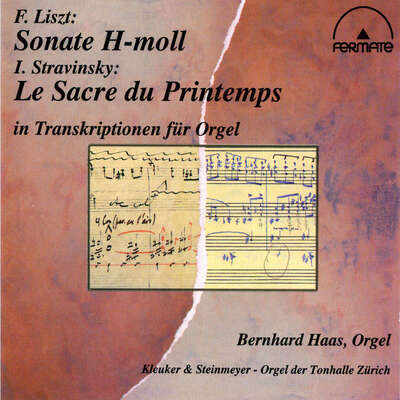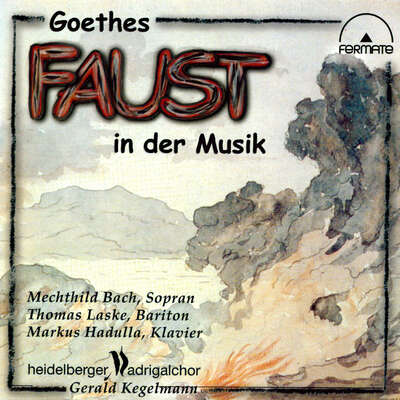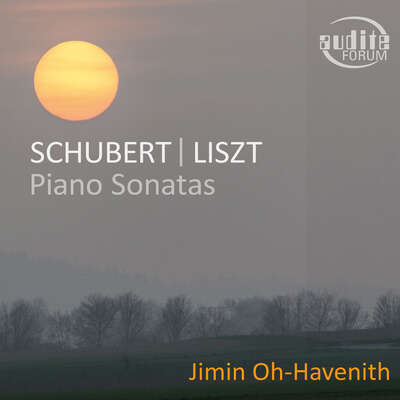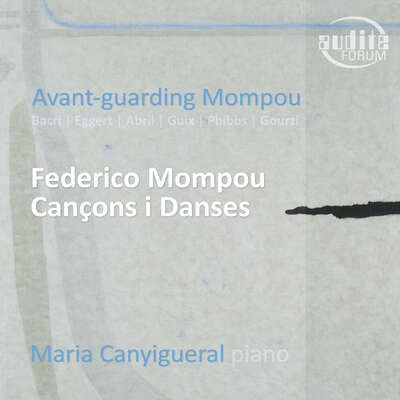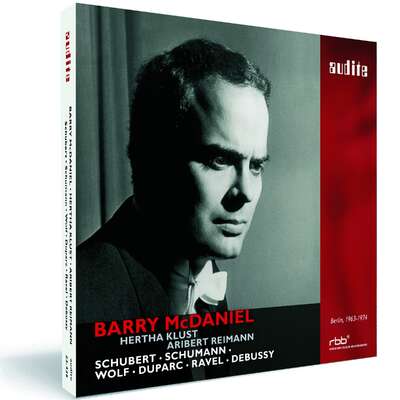
Auto-Rip
Following his highly acclaimed first album of late piano works by Franz Schubert, the Florentine pianist Andrea Lucchesini now delves into Schubert’s monumental B-flat major Piano Sonata – the pianistic legacy of the short-lived Viennese composer.more
Following his highly acclaimed first album of late piano works by Franz Schubert, the Florentine pianist Andrea Lucchesini now delves into Schubert’s monumental B-flat major Piano Sonata – the pianistic legacy of the short-lived Viennese composer.
Details
| Franz Schubert: Late Piano Works, Vol. 2 | |
| article number: | 97.766 |
|---|---|
| EAN barcode: | 4022143977663 |
| price group: | BCA |
| release date: | 6. March 2020 |
| total time: | 78 min. |
Bonus Material
Informationen
"[...] this Italian pianist manages to make it all seem as though created on the spur of the moment [...]." (BBC Music Magazine)
"Where others press ahead, Lucchesini lovingly lingers." (Gramophone)
"[...] a recording of exemplary clarity and perfection - also in relation to the sound." (Fono Forum)
Following the first instalment of his three-part Schubert series, the Florentine pianist Andrea Lucchesini now approaches the sanctum of Schubert's keyboard music: the Piano Sonata in B-flat major D. 960, composed a few weeks before the composer's untimely death in November 1828.
Over the last two decades, the 54-year-old pianist, who studied with Maria Tipo for many years, has increasingly devoted himself to chamber music and has also recorded the complete Beethoven sonatas. Both experiences influence his recording of Schubert's late work for the piano. Here, too, Lucchesini reveals a cosmos of colours and he revisits the tempi, emphasising contrasts and dramatic curves. Chamber music has inspired him to develop a "conversational" style - often there is a sense of dialogue, announcement or even lively communication.
Amongst the last three piano sonatas, the Sonata in B-flat major adopts a lyrical tone. But above all, Schubert takes time to develop his musical themes - Robert Schumann was astounded by what he called the "heavenly lengths" (and he intended to emphasise the "heavenly" aspect). But there are also abysses that were probably as inexplicable for contemporary listeners as they are for us today: sudden stops, trills in the lowest registers, the funeral music of the second movement - and then again a carefree scherzo and a serene finale.
On this album the monumental Sonata in B-flat major is combined with the three piano pieces D. 946.
Volume 3 is due to be released in autumn 2020.
Reviews
Fono Forum | Januar 2021 | Andreas Friesenhagen, Norbert Hornig, Matthias Kornemann | January 1, 2021
Kritiker-Umfrage 2020
Welche fünf CDs haben Sie im vergangenen Jahr am meisten beeindruckt?
Andreas Friesenhagen: Liszt: Gante-Symphonie, Tasso, Lamento e Trionfo, Künstlerfestzug; Staatskapelle Weimar, Kirill Karabits (Audite).<br /> „KirillMehr lesen
„Kirill Karabits stellt Liszt mit herrlichen Orchesterfarben und Ieuchtender Textur als Klangzauberer dar, als Poeten des Orchesters.“
Norbert Hornig: Fantasque- Violinsonaten von Faure, Debussy, Ravel & Poulenc; Franziska Pietsch, Josu de Solaun (Audite).
„Hoch expressive und eloquente Lesarten zentraler Werke des französischen Repertoires für Violine und Klavier.“
Matthias Kornemann: Schubert: Klaviersonate D. 960, Klavierstücke D. 946; Andrea Lucchesini (Audite).
„Lucchesinis Schubert-Spiel ist von einer fast altmeisterlichen Gelassenheit und steht mit seiner nobel untertreibenden Gestaltungskraft ziemlich einsam da.“
„Kirill
NDR Kultur | "Welt der Musik" | Marcus Stäbler | December 28, 2020
BROADCAST
Herausragende Klassik-Aufnahmen
Kurze Ausschnitte aus sechs von zwanzig Aufnahmen, an die ich heute noch einmal erinnern möchte. In einem Rückblick auf herausragendeMehr lesen
Auch der Absatz von sogenannten physischen Tonträgern, also etwa CDs, ist weiter gesunken. Trotzdem ist auch im Jahr 2020 wieder eine kaum überschaubare Fülle neuer Alben erschienen, mit einer großen Bandbreite an ganz unterschiedlichen Werken, Stilen und Epochen. [...]
Es gibt viele Aspekte, die mich an der Ästhetik von Schubert faszinieren. Einer davon sind diese zwei ganz verschiedenen Seelen des Komponisten. Eine, die das Schicksal annimmt, mit Resignation und Trauigkeit – er war ja sein ganzes Leben lang von Krankheiten gezeichnet, die ihn schließlich auch getötet haben, als er erst 31 Jahre alt war. Und die andere Seite, die sich auflehnt, mit aller Kraft, die sich manchmal in einem unkontrollierbaren Sturm entlädt.
Musik: Schubert
Diese Gegensätze sind auch in Lucchesinis Aufnahme der letzten Klaviersonate von Schubert zu erleben. Der Pianist meißelt die Ausbrüche mit kantigem Klang und der manchmal auch nötigen Härte – aber er spürt auch dem Stocken, dem Innehalten und manchmal fast schon Verstummen der Musik nach.
Musik: Schubert, B-Dur-Sonate
Der Pianist Andrea Lucchesini mit dem Beginn der B-Dur-Sonate von Franz Schubert. Hier wird das Aufbegehren gegen das Schicksal immer wieder von weiten Phasen der Ergebung unterbrochen und gemildert.
American Record Guide | November / December 2020 | Alan Becker | November 1, 2020
Yet another fine performance of Schubert’s last sonata to compete with endless others. This one certainly has enough gravitas in the opening MoltoMehr lesen
Sprits are appropriately lifted in the Scherzo and Final Allegro, ma non troppo, though we can never lose sight of the impending death of one of the world’s greatest music masters.
The three pieces, D 946, left unpublished at Schubert’s death, are less frequent visitors to the world of recitals, though many recordings exist. This one is a strong entry, with enough power and forward thrust to make us sit up and give our full attention. The lyricism is prime Schubert, and Lucchesini embraces it with warmth. With the Steinway D sounding wonderful, decent, if not outstanding notes, and generous playing time we have a very competitive entry—if not quite at the top, definitely not far from it.
Audiophile Audition | Oct 28, 2020 | Gary Lemco | October 28, 2020 | source: https://www.auda...
Lucchesini’s pearly play has consistently bestowed a level of poetic content in this performance that ought to be savored.Mehr lesen
Fono Forum | Oktober 2020 | Matthias Kornemann | October 1, 2020
Kurz und knapp
Zwei Schubert-Zyklen reifer Interpreten gehen in die zweite Runde. Unterschiedlicher könnten sie nicht sein, aber herausragend sind sie beide.
Bei Andrea Lucchesini hat man von den ersten, warm strömenden Takten an das Gefühl, er überblicke die ganze Geschichte der B-Dur-Sonate, und keinMehr lesen
www.amazon.de | 9. September 2020 | September 9, 2020 | source: https://www.amaz... Kundenrezension: Ein großer Interpret im Schatten der öffentlichen Wahrnehmung
Andrea Lucchesini ist mir bereits seit Ende der 80er Jahre ein Begriff, hat es aber nie in die erste Riege der sogenannten „großen“ PianistenMehr lesen
Dabei zeigt sich gerade in seiner Schubert-Exegese, dass er hier auf jeden Fall zu den großen Interpreten zu rechnen ist (und, halten zu Gnaden, deutlich besser ist als bspw. ein K. Zimerman). Er findet den rechten Ton, hält die divergierenden Elemente in der Sonate wunderbar in Balance, verzärtelt nicht, gibt dem Düsteren den notwendigen Raum (was W. Youn in der fast zeitgleich erscheinenden Aufnahme nicht gelingt) und lässt uns immer wieder doch auch teilhaben an jenen himmlischen Längen, denen er seine pianistische Subtilität angedeihen lässt. Lucchesini erfindet die Sonate jetzt nicht neu (und ist nicht so innovativ wie Buniatishvili, nicht so apokalyptisch wie Richter), liefert aber eine in sich gänzlich stimmige, uneitle Interpretation ab, die sich mit den großen Interpretationen messen lassen kann.
Ähnlich überzeugend in den drei Klavierstücken, deren dramatisches Nach-vorwärts-drängen er zwingend darstellt, ohne ihr lyrisches Potential darob zu vernachlässigen.
Ein wirklich großer (Schubert-) Interpret, ungerechterweise im Schatten so manches „großen Kollegen“.
www.artalinna.com
| 21 JULY 2020 | Jean-Charles Hoffelé | July 21, 2020 | source: http://www.artal...
LE DISQUE DU JOUR
ADIEU ET ENVOI
Andrea Lucchesini fait venir de très loin la rumeur qui ouvre l’ultimeMehr lesen
BBC Music Magazine | July 2020 | Natasha Loges | July 1, 2020
The second instalment of Andrea Lucchesini's Schubert project combines the composer's vast, final sonata with the three pieces (D946) left unpublishedMehr lesen
Lucchesini sacrifices a steady pulse, preferring to shape each phrase in an expository, if occasionally overly portentous and halting way. The music is robbed of flow, but the payoff is that we get to savour each exquisite harmonic, timbral and textural detail. Listeners will need patience, though, as this reading refuses to be rushed.
The sublimely moving second movement is lavishly, impressionistically pedalled and nowhere near Schubert's Andante. It's intensely moving, if occasionally claggy. The following Scherzo – one of Schubert's most charming movements – Is rendered with tremendous grace and alertness to Schubert's harmonic diversions. Lucchesini's accents are almost burlesque, balancing the pathos experienced thus far. The crisply playful final movement is pure delight.
The D946 pieces respond more variably to this technicolour treatment. The first veers between a thrilling gallop, military grandeur and a genteel dance. The second, marked Allegretto, is unnecessarily weighty. The brisk third Allegro opens like an exciting rollercoaster ride, but sadly the eldritch little dance at its core is occasionally oversticky with pedal.
Purists may reject Lucchesini's rhetorical style, but at its best, Lucchesini reveals and celebrates Schubert the dramatist manqué.
Musica | N° 318, luglio-agosto 2020 | Piero Rattalino | July 1, 2020
Secondo la mia scala l’interpretazione di Lucchesini è in sé magistrale e insieme inattuale. Secondo la scala che venne creata intorno al 1950 e che è ancora largamente diffusa è magistrale e basta. Magistrale nel senso che ogni particolare della forma grafica della musica trova il suo equivalente nella forma sonora. La trasposizione non è meccanica, ma è invece condotta secondo il buon gustoMehr lesen
Piano News | Mai / Juni 3/2020 | Oliver Buslau | May 1, 2020
Diese Haltung des inneren Rückzugs ist es, die neben wunderbarer Anschlagskultur und scheinbar müheloser Fähigkeit, das Klavier in allen Farben leuchten zu lassen [...]Mehr lesen
Crescendo Magazine | Le 12 avril 2020 | Jean Lacroix | April 12, 2020 | source: https://www.cres... Andrea Lucchesini: un Schubert à visage humain
Andrea Lucchesini signe ici un superbe CD ; il vient se placer parmi les plus éloquents témoignages schubertiens de notre temps. Le troisième volume est attendu avec une patiente impatience.Mehr lesen
Audio | 04/2020 | Miquel Cabruja | April 1, 2020 KLANG TIPP
Mit ihren Abgründen ist Franz Schuberts letzte Sonate D 960 vielen Zeitgenossen unverständlich geblieben. Und gerade diesen Abgründen – denMehr lesen
Rondo | 21.03.2020 | Corina Kolbe | March 21, 2020 | source: https://www.rond...
Seine Interpretation beeindruckt durch Filigranität und Transparenz. Alles bleibt im Fluss, auch die Pausen und Brüche im Stück erscheinen als Teil eines organischen Ganzen. Mehr lesen
Classical CD Choice | March 14, 2020 | Barry Forshaw | March 14, 2020 | source: http://www.cdcho...
This recording of Schubert’s 21st Piano Sonata and the three piano pieces D946 are evidence of a musician full alert to the demands of this deeply felt music. The Piano Sonata has had several recordings of significance, but at a stroke this new reading joins that exalted company.Mehr lesen
www.pizzicato.lu | 06/03/2020 | Remy Franck | March 6, 2020 | source: https://www.pizz... Lucchesinis Schubert: breite Ausdrucksvielfalt
Wie schon in der ersten Folge dieser Reihe spielt der italienische Pianist Andrea Lucchesini einen sehr kontrastreichen und sicher nicht homogenMehr lesen
Den drei ‘Klavierstücken’ D. 946, eigentlich der dritten Reihe von ‘Impromptus’, gibt der Pianist einen starken Charakter. Jedes ist kontrastreich und lebt von einer großen emotionalen Spannweite und einer breiten Ausdrucksvielfalt.
As in the first episode of this series, Italian pianist Andrea Lucchesini’s Schubert is again extremely rich in contrast, and a conceptual homogeneity is certainly not among his priorities. The first movement of the Sonata D. 960 is agitated, sharply accentuated, it has depth but also shows resolute rebelliousness, sometimes even a real ‘banging the fist on the table’. The Andante not only sinks into the pain, it also considerably twitches in this pain, and the rhythmically sharpened Scherzo performs veritable somersaults. The Finale brings the sonata with a pressing flow and very determined power to an end.
The pianist gives the three ‘piano pieces’ D. 946, actually the third series of ‘Impromptus’, a strong character. Each of the three pieces is rich in contrast and lives from a great emotional range and a wide variety of expression.
